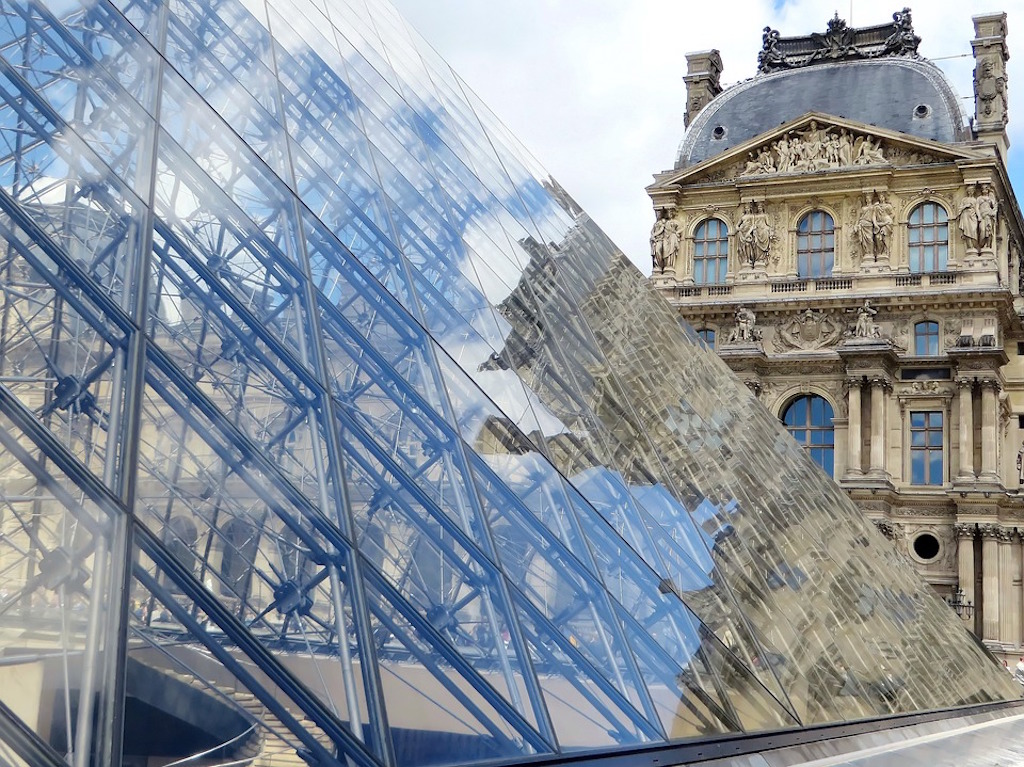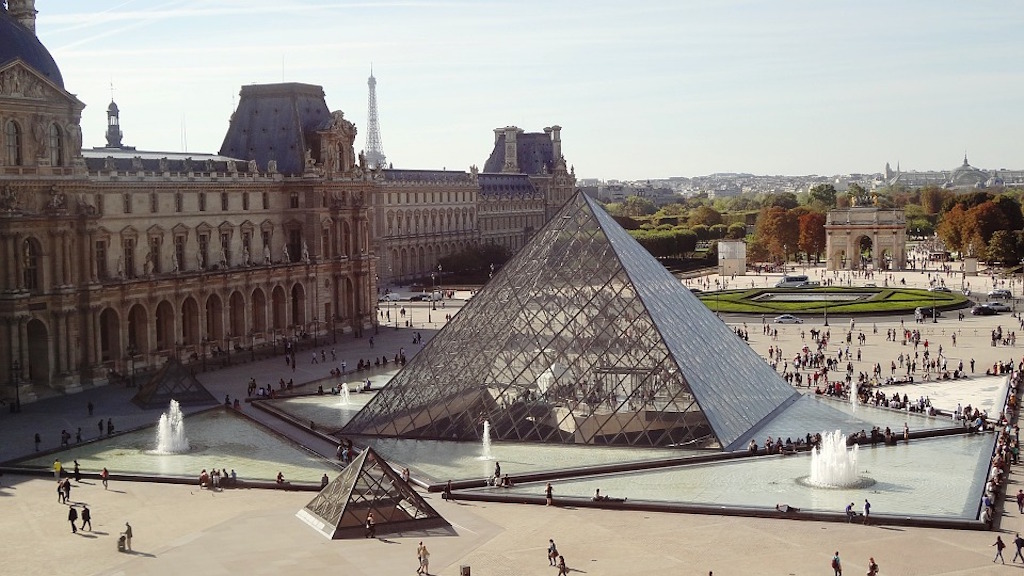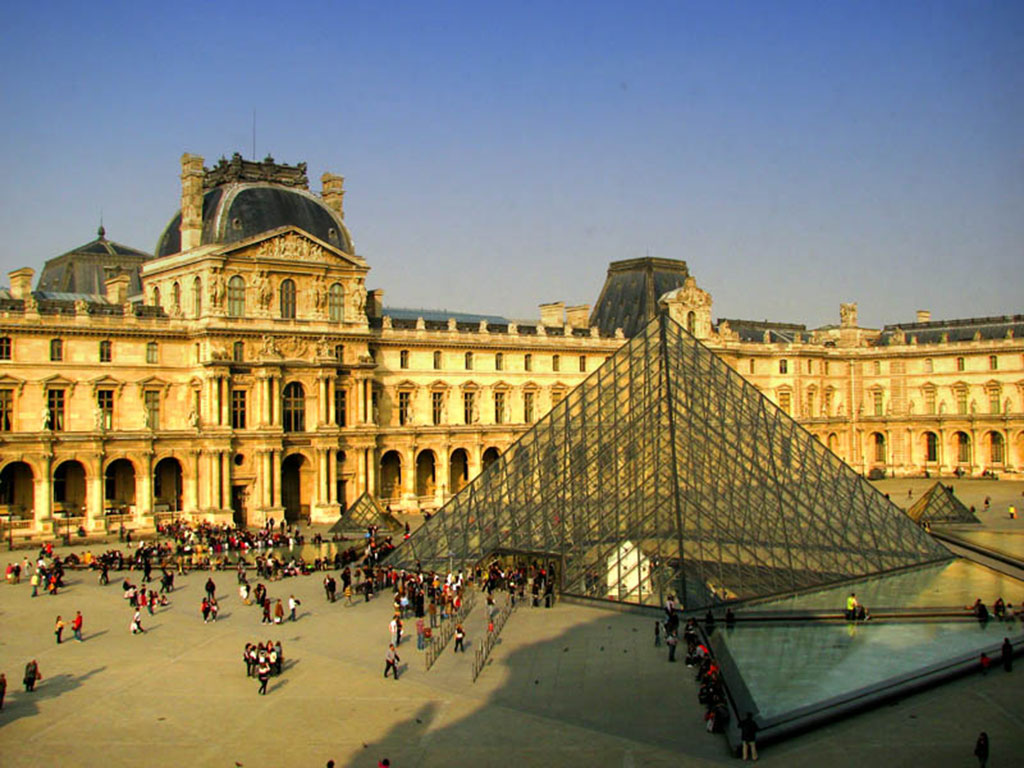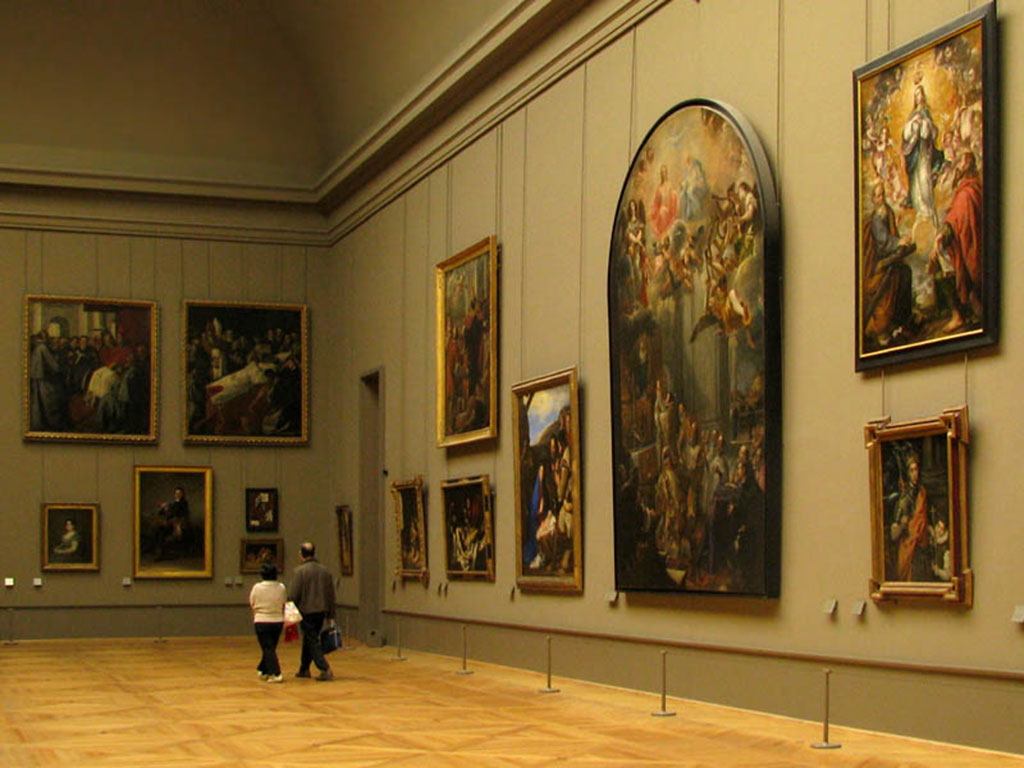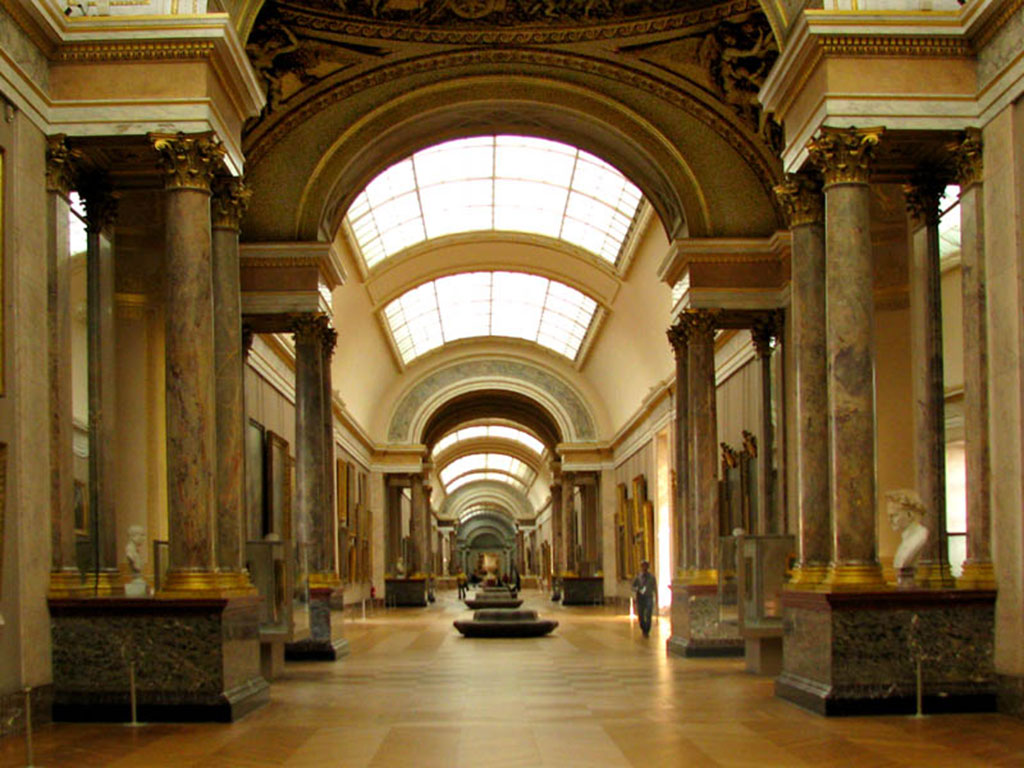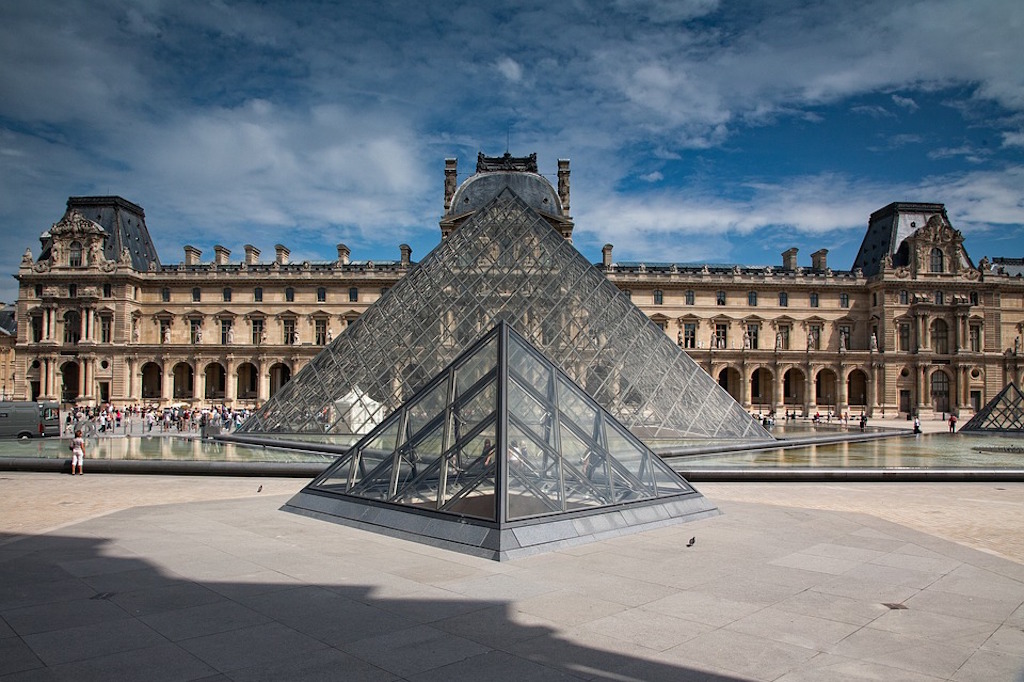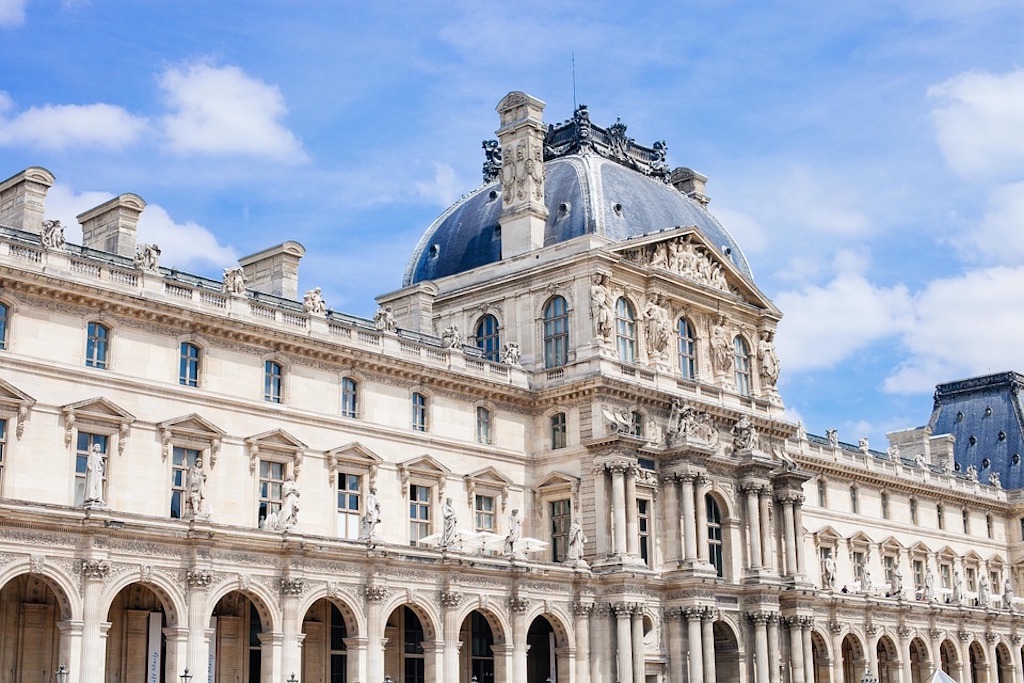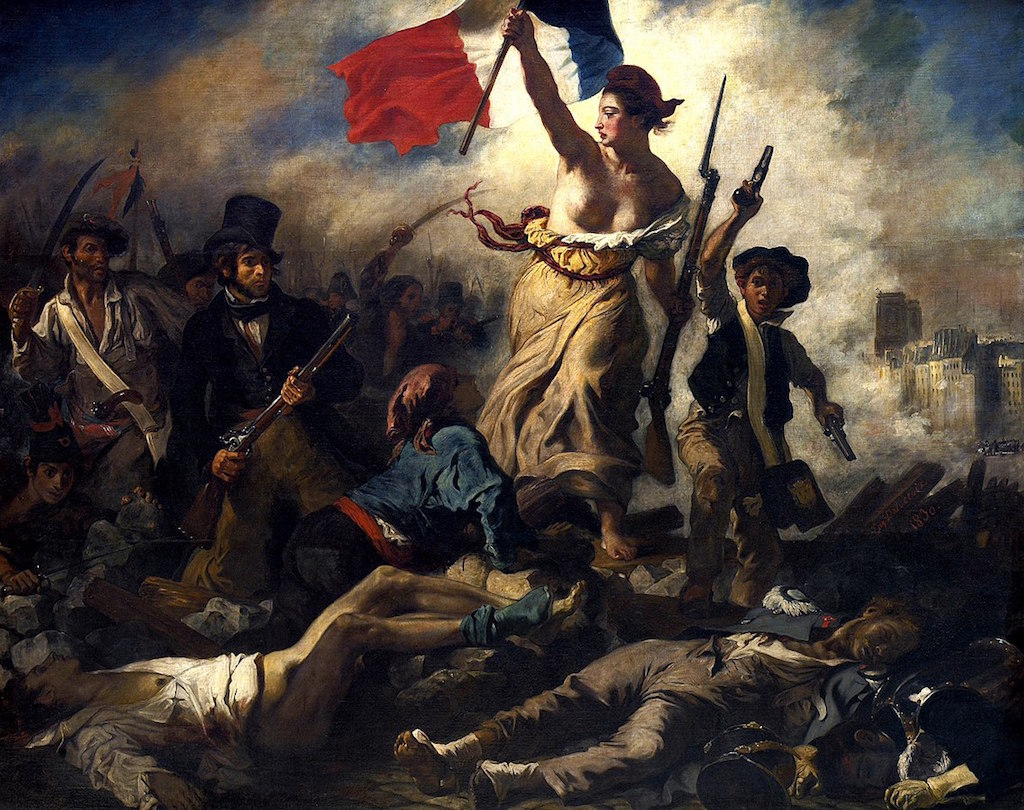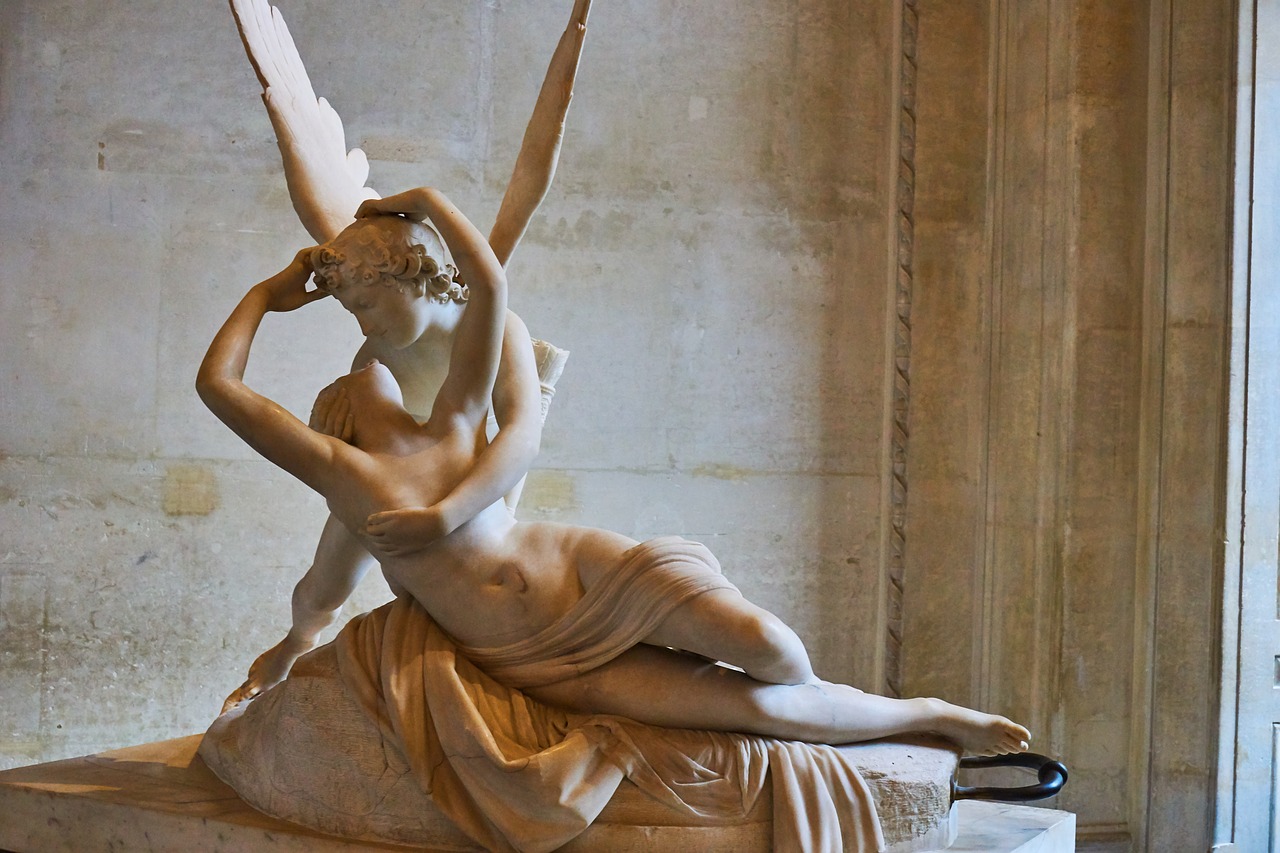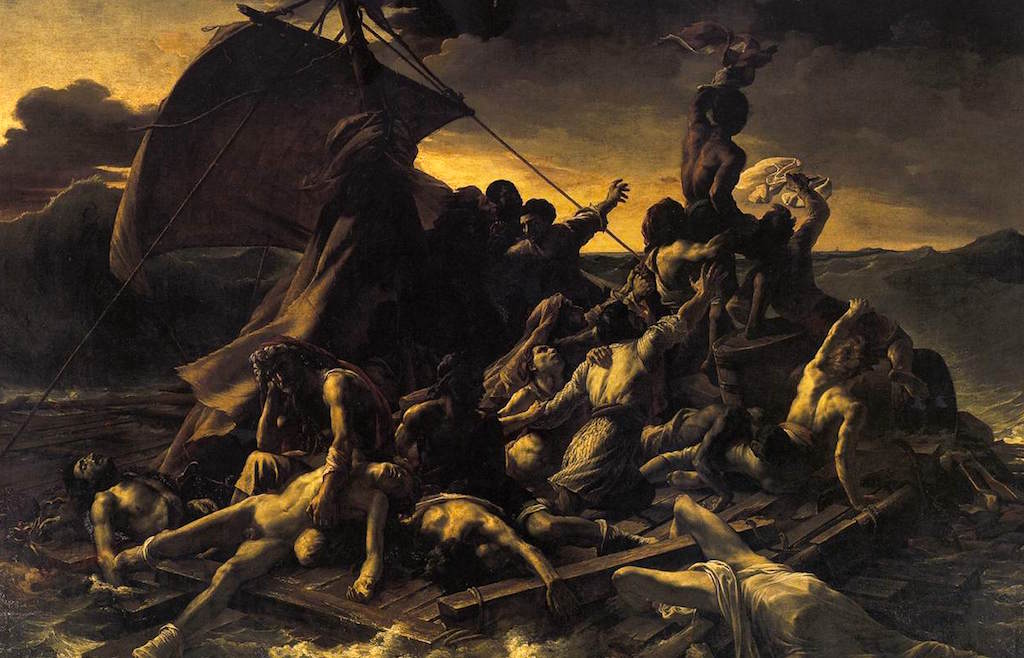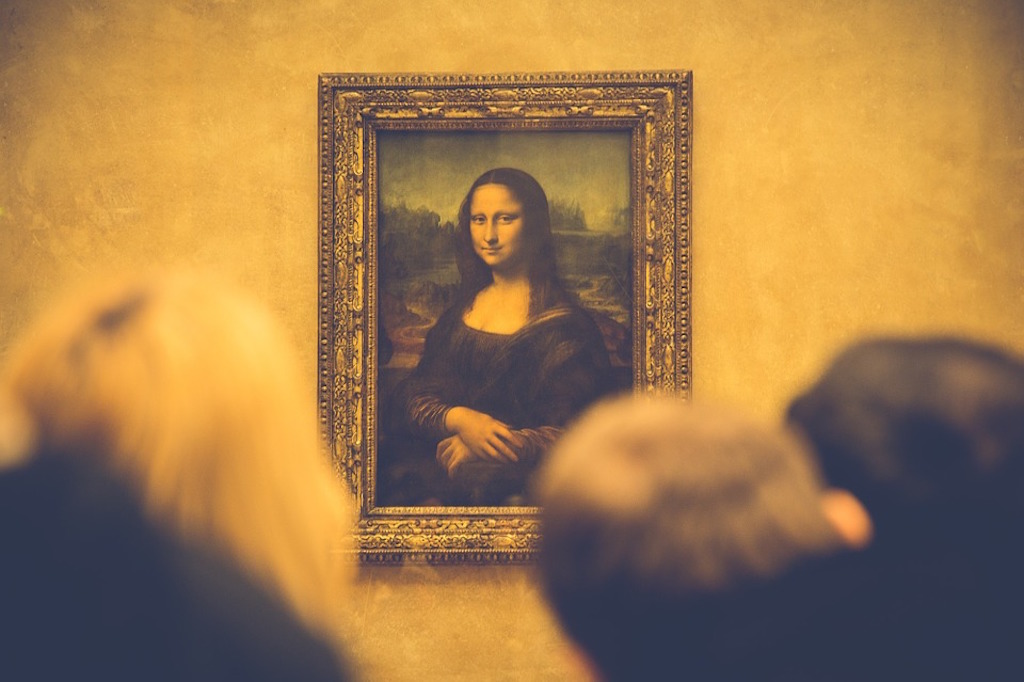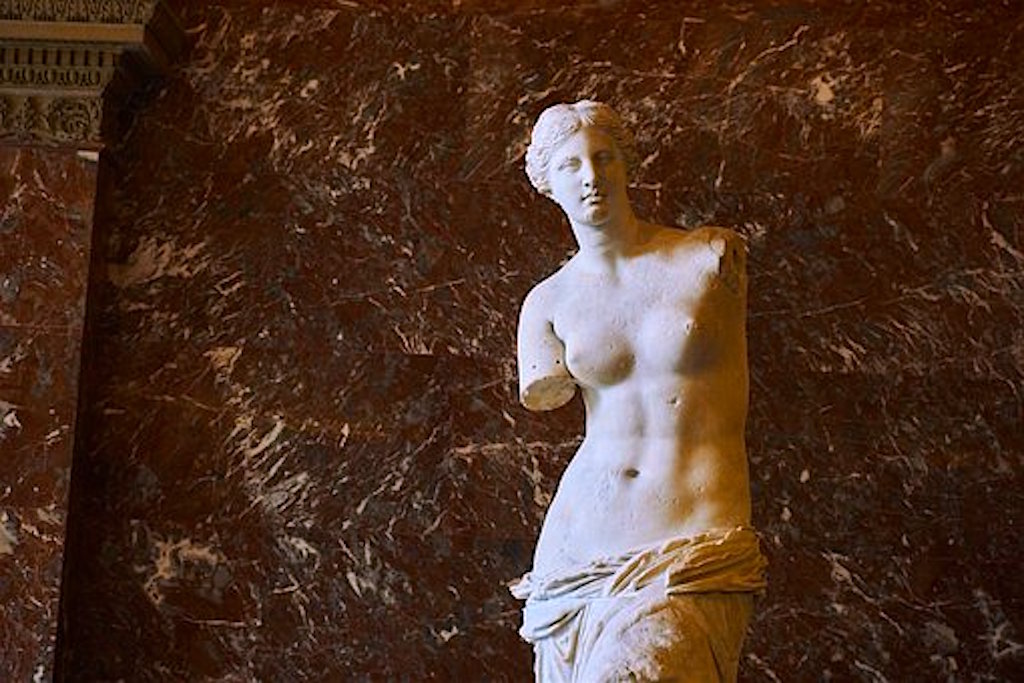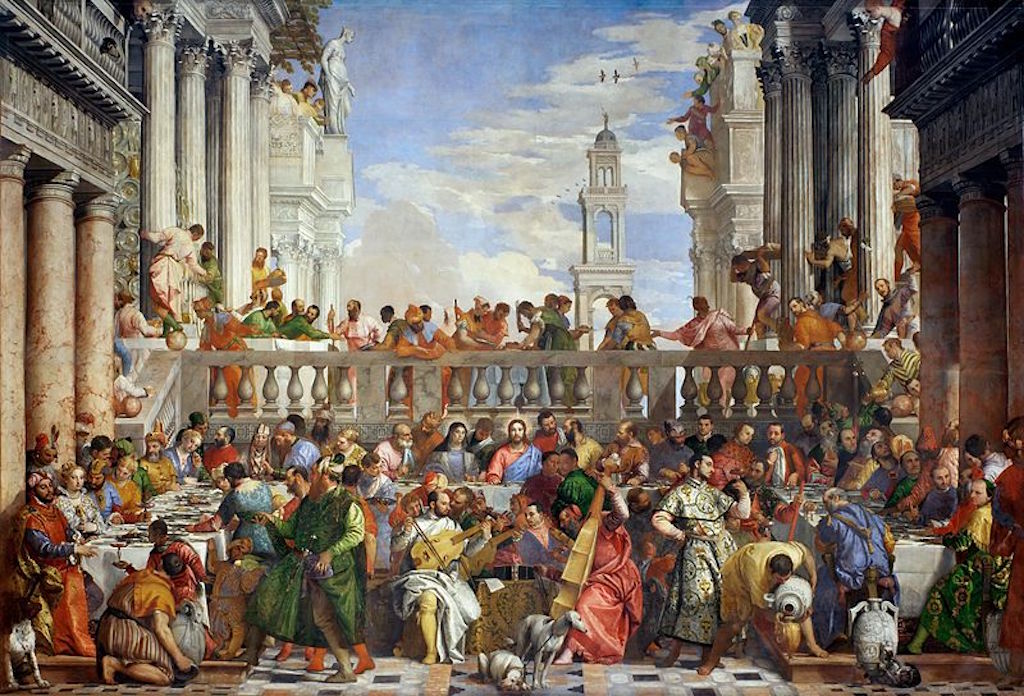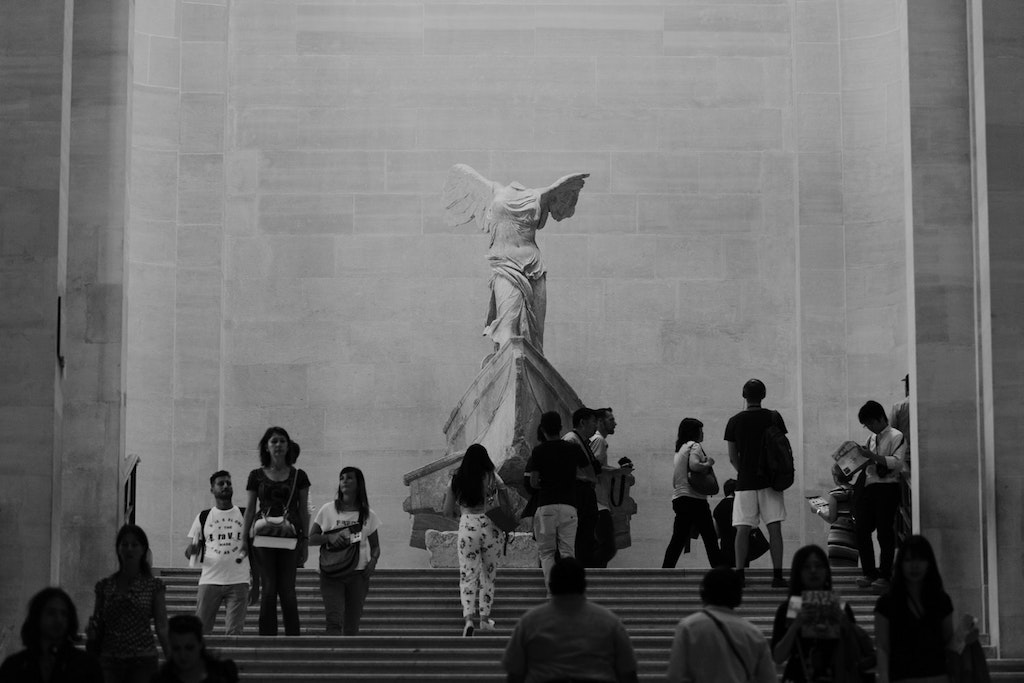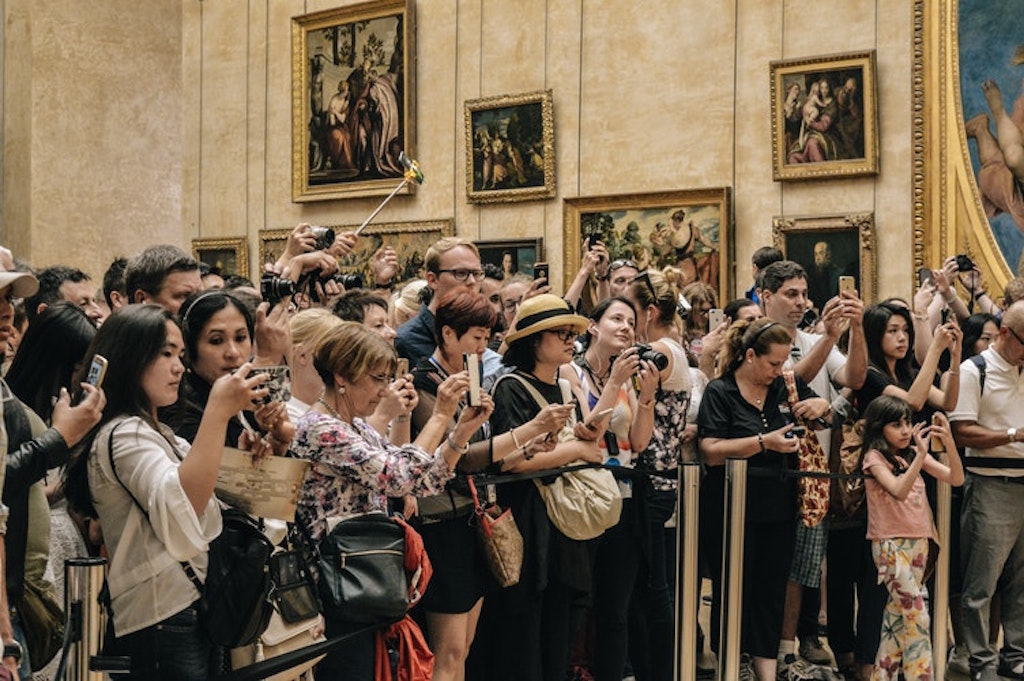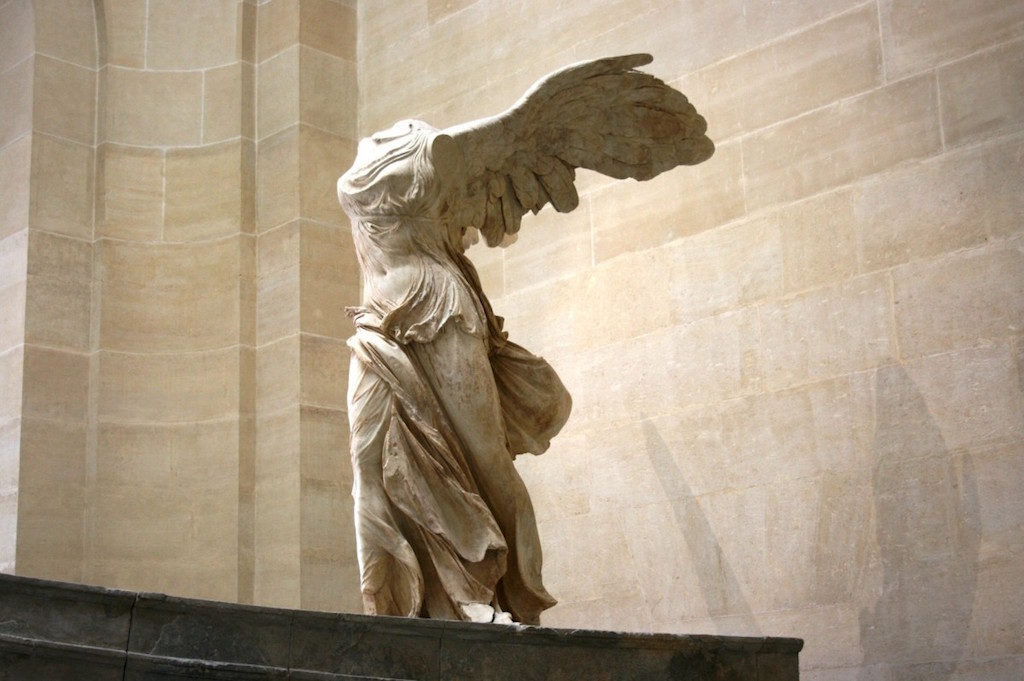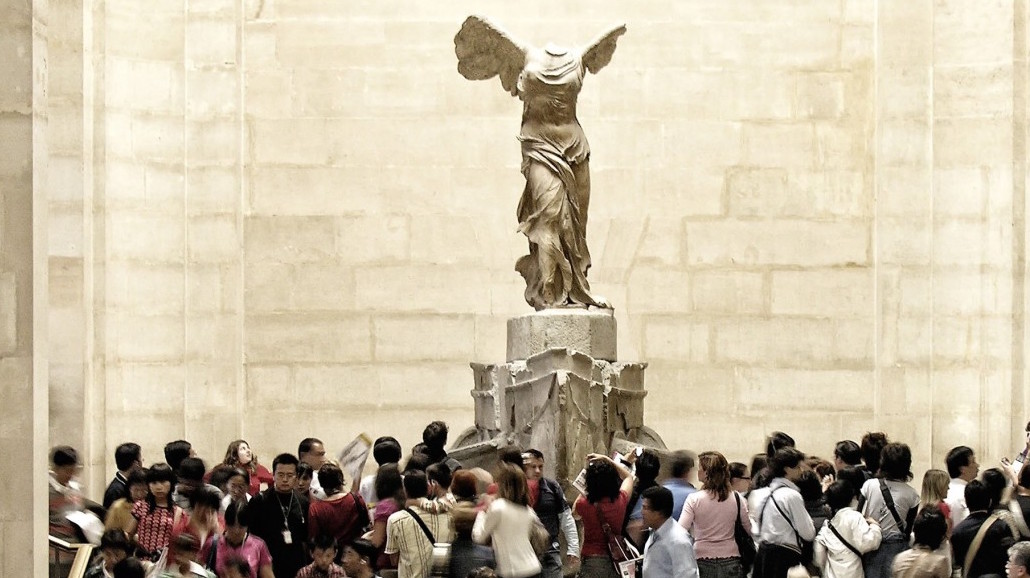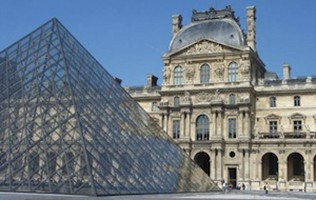Louvre Museum Guide
Find all your answers to the Louvre Museum here: Directions, exhibit information, admission prices, insider tips and more!
A Brief History of the Louvre
The world's most visited museum, the Louvre, has been a landmark in Paris since its opening in 1793.
The Louvre began as a defensive castle in the 1100s to protect Paris from the threat of English and Norman invaders. It later became a bastion in part of a large defensive wall that was built around Paris during the Crusades.
In time, it was used as a royal residence and treasury, but it was eventually renovated and made into a royal palace. After housing government offices, the Louvre eventually opened on August 10, 1793, as the world-famous museum that it is today.
Today, the Louvre Museum is the most visited museum in the world, with an estimated 10.2 million people visiting the historic musuem each year. That's over 32,000 people each day the museum is open!
louvre.fr
Louvre Museum, 75001 Paris, France
+33 1 40 20 50 50
Before You Go to the Louvre - Insider Tips
We’ll talk about it in more detail later, but here are a few key things you’ll want to keep in mind before you go to the Louvre:
• You can purchase your entry ticket online in advance
• It has different hours on different days
• Not all sections are open every day
• It is closed on Tuesdays, but open later on Wed and Fri
• The best way to get the most out of your trip is to use a Louvre tour guide
The Permanent Collection
The Louvre's collection is expansive. It is said that one could visit the museum daily for 8 hours a day for an entire year and not see all of the museum's legendary works. There are far too many exquisite pieces to list here, but we have highlighted a few below to help guide your Louvre exploration.
The Mona Lisa
There are countless famous works of art and priceless pieces housed in the Louvre, but perhaps none more so than Leonardo da Vinci’s Mona Lisa (called Joconde in French).
Started in 1503 in Florence, Italy, by one of the most famous painters of the Renaissance, the Mona Lisa is a must-see for anyone visiting the Louvre. It is more than just a work of immense skill and beauty, it is a work of many mysteries.
The identity of the subject of the painting itself is unknown, although many experts believe her to be Lisa Gherardini, the wife of a wealthy Florentine cloth merchant. But for some unknown reason, da Vinci never gave the completed portrait to the people who commissioned it. He instead took it with him to France, where it somehow ended up in the collection of François I in 1518 after da Vinci’s death.
Quick Tip: The Mona Lisa is located on the first floor of the Denon wing, in the aptly named Mona Lisa room, number 711.
Venus de Milo
The subject of the Venus de Milo is uncertain, but despite her Roman name, she is thought to be the Greek goddess of love, Aphrodite. She was sculpted around 130 BC. While the exact identity of her creator is unknown, many scholars believe it to be the Hellenistic sculptor Alexandros of Antioch.
The sculpture is in remarkable condition considering its age. When you look closely, you can even see remnants of paint on her gown from a time when she was decorated in many colours and probably worshipped in a temple. Both of her arms are missing and have never been found, but they probably would have been adorned with fine metal jewellery.
Quick Tip: The Venus de Milo is located on the ground floor of the Sully wing in the Parthenon room, number 346.
Law Code of Hammurabi
More of a historical artefact than a piece of art, the Law Code of Hammurabi is nonetheless beautiful in its own right. It is a large black basalt stele that dates to the 18th century BC. It features a detailed carving of King Hammurabi receiving investiture from the Mesopotamian god of justice and the sun, Shamash. Below the carving, most of the stele is covered with the famous Law Code of Hammurabi, which is written in Akkadian and cuneiform.
The Law Code of Hammurabi is the oldest complete legal code we know of. It has been the basis of many other law codes throughout the ages, affecting countless societies. The stele also contains many other important historical artefacts, such as a list of territories and towns belonging to the kingdom of Babylon.
Quick Tip: You can see the Law Code of Hammurabi on the Louvre's ground floor of the Richelieu wing, room 227.
The Winged Victory of Samothrace
Created between the 1st and 3rd centuries BC, the statue of the goddess of Victory (Nike in Greek mythology) once stood on the Greek island of Samothrace on the prow of a great stone ship that overlooked the Sanctuary of the Great Gods. It is thought to be an offering to the Gods by the people of Rhodes to commemorate a significant naval victory in the 2nd century BC.
The Winged Victory of Samothrace is one of the most awe-inspiring pieces in the entire museum. This is not just because of the majesty of its pose and lines, but because of its presence. It may look small in pictures, but in real life, it is huge. It dominates the entire room in which it is housed, and when you stand in front of it, you can’t help but feel like you are in the presence of something great and powerful. The Victory once stood watch over a temple of Gods, and to this day, every inch of her recalls this greatness.
Quick Tip: The Winged Victory of Samothrace is housed on the ground floor of the Louvre, in the Denon wing in her own staircase room, number 703.
Liberty Leading the People
Paris is a city of the centuries. You can’t visit it without walking by countless relics of ages past. Perhaps one of the most famous eras in French history is the revolutions of the 1800s, one of which is forever captured in this painting in the same way it was captured in the heart of the French patriots. “Liberty Leading the People” was painted by the artist and eye-witness Delacroix, who is famous for the emotions he gives to his paintings.
Completed in 1830, Liberty Leading the People is now on display in the Salon of 1831.
Did You Know? A Quick Tip about the Louvre
Most people know the Louvre for its art collections, but it also houses one of the largest collections of historical artifacts in the world. Lovers of ancient history should make sure to stop by Eturia I (Room 420) on the ground floor of the Denon wing to see The Sarcophagus of The Spouses.
This is a beautifully preserved Etruscan sarcophagus that depicts two lovers reclined on a bed, offering ritual perfume. It was found in the Banditaccia necropolis in Cerveteri, Italy, in 1845 and dates back to somewhere between the 9th and 1st centuries, BC.
Louvre Tour Guides
The Louvre is enormous and filled with priceless treasures from all corners of the globe. It is awe-inspiring to experience, but it can also be overwhelming. When you combine this with the large crowds, long lines, and challenges of navigating a foreign county (and language!), it’s easy to see how a day at the Louvre can be a little stressful.
To make the most out of your trip, book a Louvre tour guide. The Louvre has its own, but you can also work with an outside company like us, Aeon Tours. We can help cut out some of the stress by getting you around the lines and showing you right to the pieces you wish to see; book your tour today!
Ready to explore the Louvre Museum?
What to Avoid at the Louvre
The Pyramid Entrance
When you think “Louvre”, one of the first images to pop into your mind is probably the famous glass pyramids. Iconic as these might be, if you're not a fan of unnecessary lines, avoid using the Pyramid entrance. You can get in much faster by using the metro entrance or the Porte des Lions entrance.
Driving and Parking
As with any city, driving and finding parking in the heart of Paris can be challenging to say the least, especially if French isn't your first language. For this reason, it is recommended that visitors not drive to the Louvre. If the walk is too far, you can take a taxi or the metro. There's a metro stop at the museum with an entrance directly into the Louvre, and it's usually one of the least crowded ones.
Late Morning and Early Afternoon Crowds
Being that it is a world-famous museum, there will always be some number of crowds and lines at the Louvre – but there are ways to avoid the worst of them. If you want to skip the long lines and large crowds, the best time to go is early in the morning or on Wednesday and Friday evenings.
Be there as soon as the doors open - there will probably be a line anyway, but it will be much shorter than later in the day; the Louvre sees most of its guests in the late morning and early afternoon.
Getting there
As the Louvre is so centrally located, it is easy to get to. There are numerous methods of transport in the city of Paris that will drop you off right at the Louvre's pyramid.
Métro
The easiest way to get to the Louvre Museum is by the Paris subway. Simply exit at the Palais-Royal-Musée du Louvre station, and the Louvre is right there.
Bus
The second best option for getting to the Louvre is by taking one of Paris’ efficient buses. Many of the city buses make stops at the Louvre Museum including: 21, 24, 27, 39, 48, 68, 69, 72, 81, and 95.
Car
Traveling by car to the Louvre Museum is not recommended, however a parking garage is available underground for those arriving by car. The entrance is located on avenue du Général Lemonnier. It is open daily from 7 a.m. to 11 p.m.
Charles de Gaulle Airport
Get on the RER B train, towards Massy-Palaiseau, and change trains at Châtelet-les-Halles to line 14, towards Saint-Lazare. Exit at Pyramides station and simply walk to the Louvre (only takes 3 minutes). Or, you could take Métro line 1 at Châtelet-les-Halles, and exit at at the Palais-Royal / Musée du Louvre.
Louvre Admission and Ticket Info
Entry is free on the first Saturday evening of every month from 6 p.m. - 9:45 p.m., but otherwise, you’ll have to pay for your entrnace, via varios ticketing options. Fortunately, the Louvre has simplified their entry ticket process recently, so you no longer have to purchase separate tickets for temporary exhibits and the permanent ones. Your entry ticket is good for all exhibits showing that the Louvre Museum.
Purchasing your ticket online is recommended, as it will save you time when you arrive at the musuem as you get a time stamped entry. The Louvre is the world’s most visted museum so getting a set entry time - and skipping most of the queue - is worthwhile.
General Daily Admission: €15 in person / €17 online
The general daily admission ticket provides full-day access to the Louvre. It is also valid for the Musée Eugène Delacroix and also provides admission to the temporary exhibitions in the Hall Napoléon.
The ticket provides access to the permanent collections from 6 p.m. until closing at 9:45 p.m. on Wednesday and Friday evenings. You get access to all the permanent collections and temporary exhibitions in the Louvre and Musée Eugène Delacroix.
Louvre Hours
Because the Louvre is understaffed, the entire museum is not open every day. Visit their website, www.louvre.fr, to make sure the exhibit you want to see is open on the day you'll be visiting.
Daily Hours: the Louvre Museum is open every day (except for Tuesdays when it is closed) from 9 a.m. to 6 p.m. On Wednesday and Fridays, the Louvre has extended hours when it is open until 10 p.m. Note: the Louvre is free the first Sunday of every month (if you decide to visit the Louvre that day, go early to avoid the crowds)
Holiday Hours: the Louvre is also closed on January 1, May 1, November 11 and December 25 for holidays. Additionally,the permanent collection and temporary exhibitions typically close at 5 p.m. on December 24 and 31.
Entrance Opening Hours:
There are numerous entrances to the Louvre, each with different hours:
Pyramid entrance: Daily from 9 a.m. to 10 p.m. (closed on Tuesdays)
Galerie du Carrousel entrance: Daily from 9 a.m. to 10 p.m. (closed on Tuesdays)
Passage Richelieu entrance: Daily from 9 a.m. to 6 p.m. (closed on Tuesdays)
Porte des Lions entrance: Daily from 9 a.m. to 5:30 p.m. (closed on Tuesdays and Fridays)
Your Louvre Museum Maps
The Louvre Museum is expansive, so using a map will help you out a great deal as you navigate the museum. You can download the Louvre’s official maps below, and we also recommend using the Louvre’s free app to guide you through the museum on your smart phone. Best of all, they are created by the Louvre with your visit in mind, so they are quite user-friendly:
PDF Map of the Louvre Museum
Interactive Floor Plans of the Louvre
The Louvre App
Helpful Louvre Articles
We frequently publish blog posts that focus on the Louvre, and how to make the most of your visit to the museum. Below are links to our most popular posts. If you have any more ideas or questions you think we should cover about the Louvre, please let us know at louvre (at) aeontours.com. We’d love to hear from you!
5 Tips on Making the Most of your Louvre VisitLouvre Has Record Number of Visitors
Travelers Beware of Fake Louvre Tickets
Learn About the 2nd Mona Lisa
Louvre Restaurants
A visit to a museum as expansive as the Louvre is sure to work up anyone's appetite, and of course, the Louvre is prepared for that. But fear not, there are 15 eateries inside the Louvre and countless more nearby. We’ve highlighted a few for you below.
Inside the LouvreGoguette (Under the Pyramid) / Starbucks (Under the Pyramid)
The Comptoir du Louvre (Under the Pyramid) / The Café Mollien (Denon Wing)
Denon & Richelieu (Under the Pyramid) / The Café Richelieu-Angelina (Richelieu Wing)
The Bistrot Benoit (Under the Pyramid) / The Café Marly (Cour Napoléon)
Nearby the Louvre
Affordable, quality dining does exist around the Louvre, if you know where to look. These are a few of our favorite spots.
Willi’s Wine Bar is a literal hole in the wall. For more than 30 years, Mark Williamson, the owner, has been a strong influence in Parisian wine culture. Wonderful ambiance, gorgeous seasonal dishes, and wines by the glass (or bottle!).
Café Louise is a friendly, authnetic cafe that focuses on classic French dishes, and is a mere five minute walk from the Louvre. Café Louise is especially known for their desserts. We suggest trying the creme caramal, chocolate mousse, and panna cotta.
Verjus Bar à Vin is a wine bar with tapas-like plates and take-away from the couple behind the well-known (and now closed) Hidden Kitchen. A more expansive menu is available just upstairs from the wine bar, in the Verjus restaurant.
Your Louvre Museum Checklist
Now that you're ready to tour the legendary Louvre musuem, here's a quick checklist to help prepare you for your visit:Find works you want to see in the permanent collection.
Research exhibitions at the Louvre and events at the Louvre.
Book a tour, leaving time before or after your tour to explore the Louvre on your own.
Plan your restaurant experience.
Purchase your admission ticket in advance.
Become familiar with the Louvre’s visitor trails.
Ready to explore the Louvre? Book our Louvre Museum Tour!

